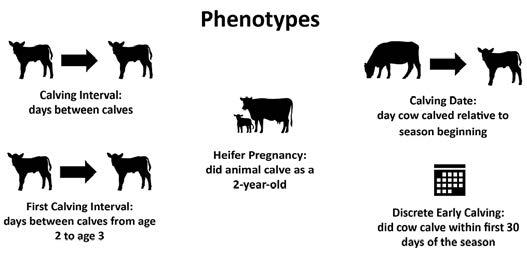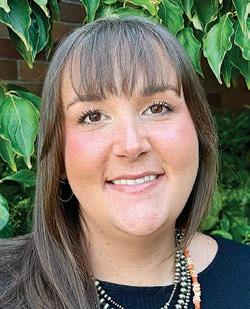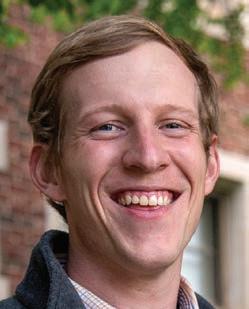
5 minute read
Female Fertility and Culling Decisions
by Cassidy Catrett and Dr. Troy Rowan, University of Tennessee
Recent research funded by the Walton-Berry Graduate Student Support Grant used Total Herd Enrollment data to explore fertility and trends in culling decisions.
Cow longevity is the chief driver of economic success in cow-calf operations. An inability to rebreed is the most common reason that beef cows are prematurely culled from herds. Phenotypes associated with increased cow fertility and longevity are known to be under lower levels of genetic control. However, selection tools in the form of EPD can help accelerate progress on cow fertility by focusing selection on the modest genetic variation that controls these traits. Measuring these phenotypes at the population level is challenging with conventional data recording schemes. Further, many of these phenotypes take multiple years to be fully expressed, making phenotypic selection ineffective at generating rapid genetic improvement. Inventory-based reporting systems require production records on all females in a herd, regardless of calf survival or registration. This type of reporting framework has allowed breed associations to collect complete and unbiased reproductive and performance phenotypes from entire herds.
As a part of an ASA Walton-Berry Award, our group at the University of Tennessee has used ASA’s Total Herd Enrollment (THE) records to explore the phenotypic and genetic variation of multiple traits related to heifer and cow fertility. We calculated five traits associated with early and sustained cow fertility: calving interval (days between calves), first calving interval (days between a cow’s first and second calves), calving date (when, relative to contemporaries, did a cow calve), discrete early calving (did a cow calve within the first 30 days of contemporary group), and heifer pregnancy (did a female conceive during first breeding season) (Figure 1). We found that most animals in ASA’s THE herds maintain a calving interval of less than 400 days. However, there was a slight increase in observations around the two year, or 730-day mark, indicating that a non-negligible number of females are retained after a missed calving opportunity. The mean calving date for heifers in the data set was day 19, while it was day 32 for mature cows. This discrepancy in values is likely due to increased use of estrus synchronization and advanced reproductive management in heifer contemporary groups. We know that the first calving season is essential for setting up an animal for reproductive successes later in life, and this showed up clearly in the THE dataset. We found that heifers that calved in the first 30 days of their contemporary group’s calving season calved an average of ten days earlier than those that calved outside of the first 30 days (average calving date = 29.9 days vs. 40.2 days).
THE data also allowed us to better understand how attrition occurs in this population. As expected, we observed a steady decline in the number of animals over the course of their lifetimes. Most records in the dataset were from females less than seven years old. Only 25% of eligible cows in the dataset had reached their age seven enrollment without missing a calf. Using the THE disposal codes, we found that the largest culling happened at two years of age due to heifers being open. Beyond this time point, rebreeding failure remained the most common reason for removal from the herd.
The unbiased reporting required in THE allowed us to understand culling decisions and cow attrition at the population level. Most seedstock Simmental producers maintain close to a 365-day calving interval on average, but it’ll take work to maintain that. Calving date for heifers was predictive of future reproductive performance. Each of these phenotypes was lowly to moderately heritable, ranging from about 0.05 to 0.15. These phenotypes also showed low-to-moderate phenotypic and genetic correlations with one another. This suggests that genetic improvement is possible for these traits if breed associations develop genetic evaluations and genetic selection tools for them. We are continuing work with this dataset to identify associated markers with these fertility traits through sequence-imputed genome-wide association studies. .

Cassidy Catrett grew up on her family’s farm in Luverne, Alabama, where they raise Shorthorn cattle alongside a crossbred commercial herd. She received dual bachelor’s degrees from Mississippi State University in animal science and poultry science. She recently completed a MS in animal science at the University of Tennessee, and remains there today as a Graduate Research Assistant while pursuing a PhD in animal science.

Dr. Troy Rowan is an assistant professor and state Extension specialist at the University of Tennessee Institute of Agriculture Genomics Center for the Advancement of Agriculture. His research uses genomic and computational approaches to understand the biology that underlies a wide range of complex traits in beef cattle. He is particularly interested in local adaptation, heterosis, novel phenotype creation, and genomic approaches to increasing beef cattle sustainability.

